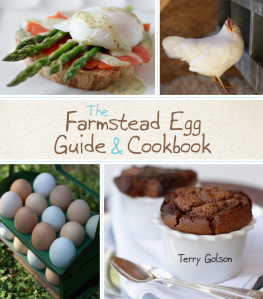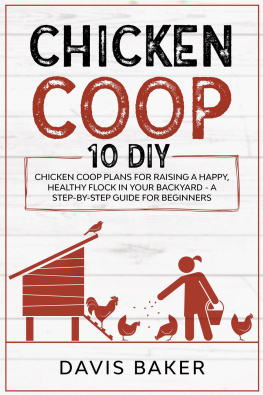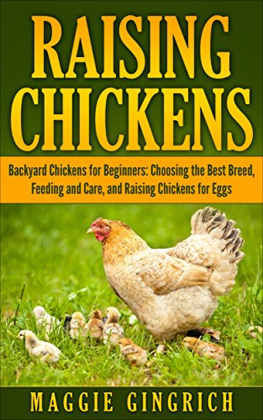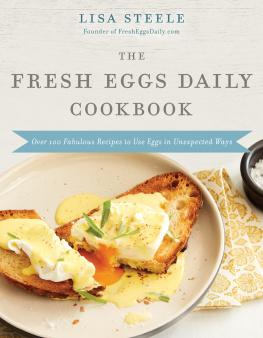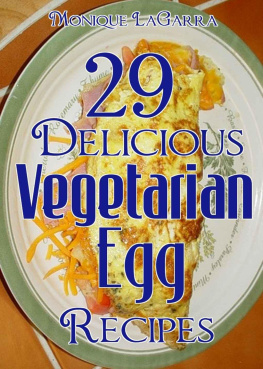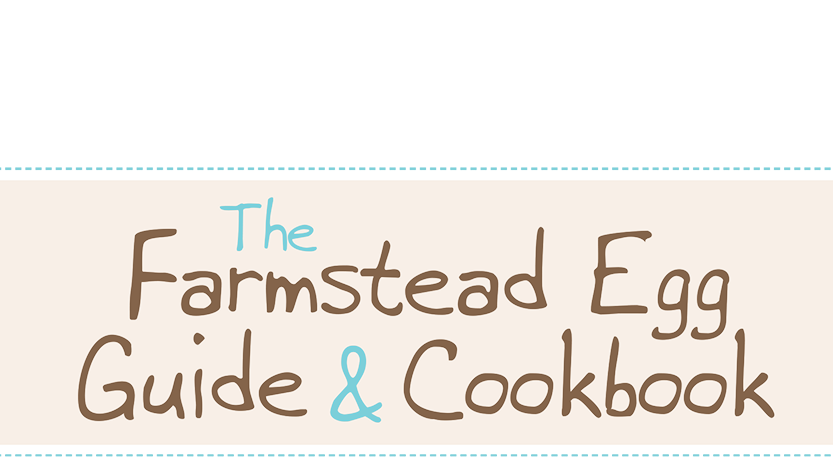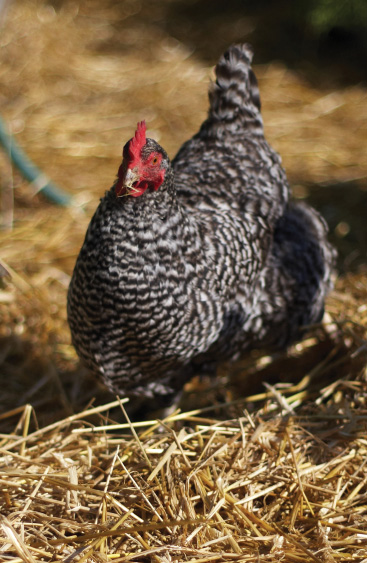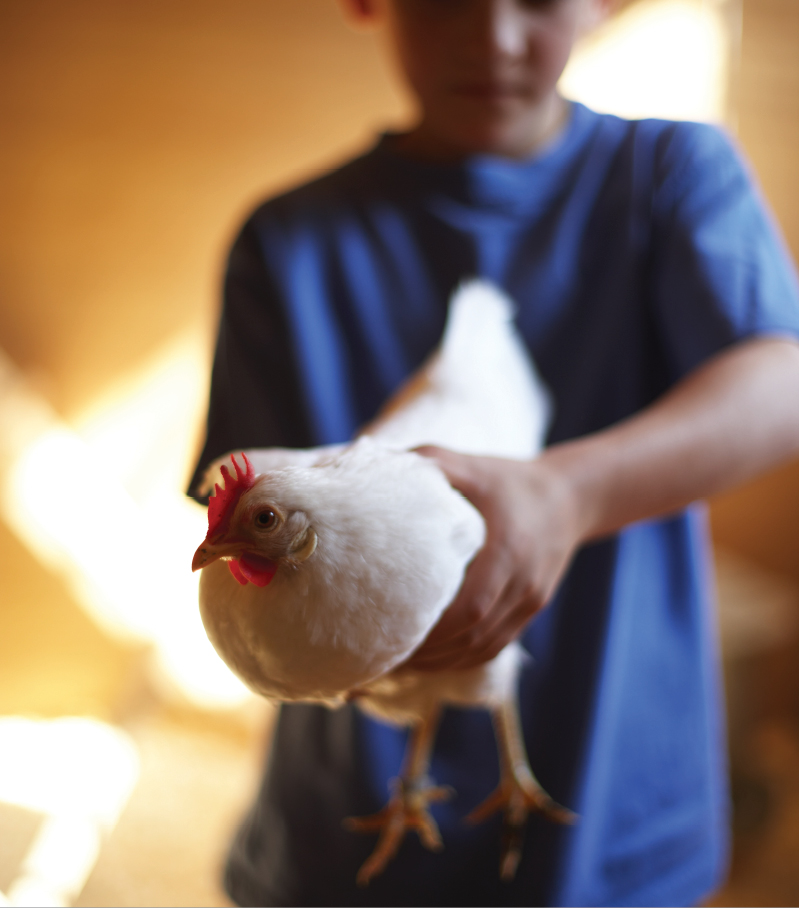When a book is published there are always so many people to thanka few I know well, others only through email, and still others contribute without us ever being in direct contact. I am most grateful to every one of them. Ive known my editor, Linda Ingroia, for many years, but weve never worked on a book together. Im indebted to her for wanting to do this project and for shepherding The Farmstead Egg Guide & Cookbook through the publishing process, and keeping it on schedule, despite formidable obstacles that included a hurricane, flooding, and power outages. Thanks, too, to my agent, Carrie Hannigan, who worked diligently to make this book happen. Im indebted to Ben Fink for his photographs. They are not only gorgeous, but they have heart and soul and convey exactly how I feel about my cooking, my hens, and my home. Speaking of home, that is where all of my writing begins, and it is nurtured, embraced, and made joyful because of my husband and sons. Thank you, all.
Introduction
Almost two decades ago a neighbor gave me one sweet little fluffy-feathered older hen. Buk-Buk was the last of my friends chickens left over from her daughters 4-H project. Buk-Buk and her ramshackle coop appeared in my life at a time when I had a toddler and worked as a food writer. I had a degree in animal science that I wasnt using in my career, but I still had a hankering for farm animals. I couldnt fit horses or goats into my suburban backyard, but I had thought that someday it would be fun to have a flock of laying hens, and so was happy that Buk-Buk gave me the excuse to get started. I didnt know much about chickens, but I did recognize that they are social animals and need chicken friends. I soon got Buk-Buk a companion hen, and then the girls needed a larger coop. The new spacious housing could accommodate more chickens. Which I got. I havent been without a flock of hens in my backyard and fresh eggs in the refrigerator since.
Over the years I wrote a couple of cookbooks and many newspaper and magazine articles. I exhaustively tested recipes. It soon became clear that the dishes made with eggs from my own hens were markedly different when compared to those prepared with supermarket eggs. In fact, when developing a newspaper recipe, I actually went out and bought commercial eggs so that I could be confident that the recipes would work for the majority of my readers, who used the poorer quality of egg found in the market. In 2006, when I wrote The Farmstead Egg Cookbook , I was finally able to focus entirely on good eggs from backyard hens. I am so pleased to be able to bring this book back into print in this expanded edition.
If you buy eggs at the farmers market or are able to purchase a carton from a neighbor, this book will help you to make the best of them. Perhaps those eggs have you thinking that you want a flock of your own.
When I started keeping a small flock of hens in my pretty yard, it was unusual. Most people thought that only real farmers raised chicken for eggs. Incorporating a domestic farm animal (even one as small as a chicken) into a typical suburban backyard just wasnt done. But recently, small-scale chicken keeping has seen a resurgence. Its even become stylish! Its also become easy to do. Caring for chickens requires some specialized equipment and feed, which used to be inaccessible to anyone who didnt have a feed store in their neighborhood. But now, even people in urban areas, can find everything they need online. Prefab coops are available at box stores and high-end retailers. Suburban pet stores are even stocking chicken feed!
However, chicken keeping isnt for everyone. This new edition has information to help you decide whether having chickens in your backyard is right for you, and what to do to get started. Throughout The Farmstead Egg Guide & Cookbook , I share my many years of experience. If you live in a place that doesnt allow chickens, or if its just not feasible for you right now, then you are welcome to vicariously enjoy the charms of my flock. You can watch my hens on live-streaming cams at my Web site, HenCam.com.
A Note on Ingredients
EGGS: All of the recipes were tested with fresh eggs from my hens, the size of which varies. A standard supermarket large egg is 2 ounces, and so for the greatest ease of use I specify that size in the recipes.
SALT: For daily cooking, I use kosher salt. I think that the flavor is cleaner than the other widely available salts sold for cooking. When adding salt to a meal at the table, I use a good-quality sea salt. There are many available; the differences between them can be nuanced or dramatic. Its worth trying several and finding your own favorite.
DAIRY PRODUCTS: I think that there is a marked difference between brands of milk and other dairy products. For example, a large dairys whole milk tastes far sweeter than a local farms product. When I can, I buy local. Im fussy about the yogurt that I purchase, too, as texture and tartness is unique to each brand. Many dairy products are regional, and so youll have to taste for yourself. Youll notice a change for the better in your recipes when the basic ingredients are the best that they can be.
MEAT: Just as conscientiously and lovingly raised eggs taste better and are better for you, so too are meats raised on small farms. I try to buy all of the meat that I cook for my family from local farmers who do right by the animals and the land. The cows and pigs are raised on pasture. When it is time for harvest, they are trucked a short distance to a small slaughterhouse. Stresses are minimized. This comes through in the quality and flavor of the products. An added benefit is that my support of these farmers enables the farms, and their beautiful pastoral landscapes, to survivea benefit for all. Not everyone has access to such good food, but if you can find it, it is well worth purchasing. It is more expensive, but I serve smaller portions and make recipes that use a smaller amount to greater effect.
Raising Chickens,
Cultivating Farmstead Eggs
About Eggs and Egg Laying
Supermarket eggs are so commonplace that we take them for granted. All of the eggs at the market look the same. Outside theyre perfectly smooth, and are uniform in shape and color. Inside, they all look and taste the same. Its a stretch to even imagine that chickens produced them. Its not until you begin collecting eggs from backyard hens that you realize how special and unique eggs can be. Because there are differences, even among commercial eggs, Ive created a purchasing guide here. Youll also learn more about how eggs are produced and how best to store and handle them.

